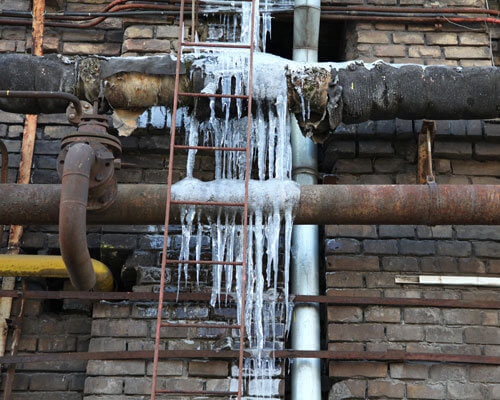Ways to Prevent Frozen Pipes in Winter: Professional Tips
Ways to Prevent Frozen Pipes in Winter: Professional Tips
Blog Article
Have you been hunting for critical info concerning Preventing and dealing with frozen pipes?

Winter can wreak havoc on your pipes, particularly by freezing pipes. Here's just how to stop it from occurring and what to do if it does.
Intro
As temperature levels drop, the danger of icy pipes boosts, potentially causing expensive fixings and water damages. Recognizing just how to stop icy pipelines is vital for house owners in chilly environments.
Avoidance Tips
Insulating at risk pipelines
Wrap pipelines in insulation sleeves or use warmth tape to protect them from freezing temperatures. Focus on pipes in unheated or exterior locations of the home.
Heating methods
Maintain indoor rooms adequately heated up, especially areas with pipes. Open up cupboard doors to allow cozy air to distribute around pipelines under sinks.
Exactly how to identify frozen pipelines
Seek reduced water circulation from taps, unusual odors or noises from pipelines, and noticeable frost on exposed pipes.
Long-Term Solutions
Structural changes
Think about rerouting pipes far from outside walls or unheated areas. Include extra insulation to attics, cellars, and crawl spaces.
Upgrading insulation
Buy premium insulation for pipes, attic rooms, and wall surfaces. Correct insulation aids maintain regular temperature levels and lowers the threat of frozen pipelines.
Safeguarding Outdoor Pipes
Yard hoses and exterior faucets
Disconnect and drain pipes garden hose pipes before winter. Install frost-proof faucets or cover exterior taps with protected caps.
Understanding Frozen Pipelines
What creates pipelines to freeze?
Pipes freeze when revealed to temperature levels below 32 ° F (0 ° C) for expanded periods. As water inside the pipelines freezes, it increases, putting pressure on the pipe wall surfaces and potentially creating them to break.
Threats and problems
Frozen pipes can result in water disruptions, building damage, and expensive repair work. Ruptured pipes can flooding homes and create considerable structural damages.
Signs of Frozen Water Lines
Determining frozen pipes early can stop them from breaking.
What to Do If Your Pipes Freeze
Immediate actions to take
If you believe frozen pipes, maintain faucets open to ease pressure as the ice thaws. Make use of a hairdryer or towels soaked in warm water to thaw pipes gradually.
Conclusion
Preventing frozen pipes requires proactive steps and fast actions. By recognizing the reasons, indicators, and preventive measures, homeowners can safeguard their pipes during cold weather.
5 Ways to Prevent Frozen Pipes
Drain Outdoor Faucets and Disconnect Hoses
First, close the shut-off valve that controls the flow of water in the pipe to your outdoor faucet. Then, head outside to disconnect and drain your hose and open the outdoor faucet to allow the water to completely drain out of the line. Turn off the faucet when done. Finally, head back to the shut-off valve and drain the remaining water inside the pipe into a bucket or container. Additionally, if you have a home irrigation system, you should consider hiring an expert to clear the system of water each year.
Insulate Pipes
One of the best and most cost-effective methods for preventing frozen water pipes is to wrap your pipes with insulation. This is especially important for areas in your home that aren’t exposed to heat, such as an attic. We suggest using foam sleeves, which can typically be found at your local hardware store.
Keep Heat Running at 65
Your pipes are located inside your walls, and the temperature there is much colder than the rest of the house. To prevent your pipes from freezing, The Insurance Information Institute suggests that you keep your home heated to at least 65 degrees, even when traveling. You may want to invest in smart devices that can keep an eye on the temperature in your home while you’re away.
Leave Water Dripping
Moving water — even a small trickle — can prevent ice from forming inside your pipes. When freezing temps are imminent, start a drip of water from all faucets that serve exposed pipes. Leaving a few faucets running will also help relieve pressure inside the pipes and help prevent a rupture if the water inside freezes.
Open Cupboard Doors
Warm your kitchen and bathroom pipes by opening cupboards and vanities. You should also leave your interior doors ajar to help warm air circulate evenly throughout your home.
:strip_icc()/snow-outdoor-faucet-pipes-4af65d1e5e904fb1aa7bf74071fe5d89.jpg)
As a passionate person who reads on 6 Ways to Prevent Frozen Pipes, I imagined sharing that editorial was a good idea. Remember to take the opportunity to distribute this blog posting if you enjoyed reading it. Thanks for being here. Revisit us soon.
Request An Estimate Report this page